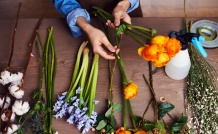Online Class: How to Can, Freeze, Dry and Preserve Food

no certificate
with CEU Certificate*
-
11Lessons
-
26Exams &
Assignments -
6Hours
average time -
0.6CEUs
Course Description
Preserving Culinary Heritage: The Guide to Canning and Food Preservation
The allure of a home-canned jar of jam or the smell of freshly preserved pickles is something that transcends generations. While our ancestors preserved food out of necessity, many today are drawn to canning and preserving to capture the flavors of each season, ensure the quality of their food, and embrace sustainable living practices.
Canning and preserving have experienced a resurgence in recent years. According to the National Center for Home Food Preservation, there has been a 15% increase in people expressing interest in home canning since 2022. With the rise in organic gardening and farm-to-table dining, more people are eager to preserve their fresh produce and homemade concoctions.
Your Journey Through the Art of Preservation
This comprehensive course offers a deep dive into the world of canning and preserving, catering to both beginners and seasoned enthusiasts. It aims to equip students with practical skills, historical insights, and safety knowledge to ensure a delightful and productive canning experience.
- Introduction to Canning and Preserving: Begin with an exploration into the rich history and traditions of food preservation.
- Getting Started in Canning and Preserving: Familiarize yourself with initial preparations, including sourcing quality produce and setting up your workspace.
- Freezing Your Foods: Discover the science behind freezing, techniques to retain flavor and texture, and suitable foods for this method.
- Canning Foods: Understand the different canning processes, from water bath to pressure canning, ensuring longevity and safety.
- Jams and Jellies: Dive into the sweet world of preserves. Learn about the role of pectin, sugar ratios, and how to achieve the perfect consistency.
- Pickles, Chutney, Ketchup, and Relish: Explore the tangy side of preservation, from fermentation basics to achieving the right balance of flavors.
- Fruits, Veggies, and Berries: Learn techniques specific to different types of produce, ensuring optimal flavor and nutrient retention.
- Preserving Beverages: Juice, Cider, and More: Explore the liquid realm of preservation, from clarifying juices to pasteurization processes.
- Canning and Preserving Other Foods: Expand your repertoire with methods tailored for meats, seafood, and herbs.
- Canning and Preserving for Special Diets: Adapt preservation methods for dietary needs, including low-sodium, sugar-free, and sulfite-free diets.
- The Secrets to Success and Getting Started: Harness expert tips and best practices, ensuring you're set for success in your preservation journey.
More than Just a Culinary Skill
While the practical skills you'll acquire are invaluable, this course also sheds light on the myriad benefits of canning and preserving:
-
Quality Control: When you can and preserve your foods, you know precisely what goes into each jar—no more unpronounceable ingredients or unwanted additives.
-
Sustainability: By preserving seasonal produce, you reduce food waste and reliance on out-of-season imports, contributing to a more sustainable food system.
-
Economic Savings: With preserved foods on hand, you can significantly reduce grocery bills, especially during off-seasons.
-
Safety First: Proper preservation isn't just about taste—it's vital for health. This course prioritizes teaching students to reduce safety risks, ensuring that your preserved goods remain safe for consumption.
Unlocking the Treasures of Home-Preserved Foods
The act of preserving foods is both an art and a science. Beyond the delightful tastes and homemade labels, lies the essence of capturing moments—a summer's ripe berry or an autumn's fresh apple cider—and making them timeless.
This course offers an integrated blend of theoretical knowledge, hands-on practice, and interactive sessions, ensuring a holistic learning experience. By the end of your journey, you won't merely understand the mechanics of preservation; you'll appreciate the traditions, joys, and flavors behind every jar you seal.
Join us today as we delve into the vibrant world of canning and preserving, unlocking culinary treasures that delight the palate and warm the heart. Let's create, savor, and celebrate the bounty of nature together!
Course Motivation
With modern technology, people canning and preserving their own food largely fell by the wayside. Once used as a means to preserve food that you could later enjoy throughout the year, modern transportation has made it possible to walk into a grocery store just about anywhere in the country and get just about any type of produce in the middle of January! This was simply unheard of decades ago.
How We Got Here
At one time, and not so long ago, people ate according to what was in season and readily available at the market, from their garden, or from a local source. When transportation systems began making it simple to transport produce around the world during any given month, people no longer felt they needed to preserve their summer stock. Instead, they would simply go to the grocery store and buy their blueberries flown in from Chile in December.
While we have been busy flying in and purchasing food from around the world, we have lost sight of something that is part of our tradition. Most of us have left canning and preserving behind, not knowing the smallest thing about how to go about doing it, or why we even should care to. But as with most things, what is old is new again, and canning and preserving is now increasing in popularity.
Benefits of Canning and Preserving
In the last couple of years there has been a vast increase in the number of people who have become interested in having their own gardens, as well as canning and preserving, which often go hand-in-hand. Some of the reasons why so many people have taken an interest in returning to their canning and preserving heritage include:
-
Environmental. Many people have learned about the environmental damaged caused by flying out of season produce from around the world. Flying berries thousands of miles, for example, creates a big environmental footprint because of all the fuel and resources that are used. The "food odometer," or "food miles," as many people refer to it, has become an important issue for many people. If you can preserve locally grown food for later use, it just makes sense to do so. Often times the food today is more well-traveled than the person about to eat it.
-
Localism. There has been a return to eating locally in the last couple of years. Locavores, as they are now referred to, are those people who try to eat all foods that have been grown or produced within 100 miles of their home. There are several reasons for doing this, including that it is better for the environment, it supports local farmers, and because the food is more nutritious. While food is flying thousands of miles to hit the store shelves, it is losing nutritional value all along the way. If you can grow your own food or purchase from farmers in your area, the food will have a better chance of retaining its nutritional value by the time you are able to get it.
-
Tradition. There are many people that turn to canning and preserving as a way to keep some of their family traditions intact. For example, even though they know they could easily go buy jam at the grocery store, there is a sense of tradition and pride that comes from creating and preserving your own. It's a tradition that many people want to learn, preserve, and pass on to future generations.
-
Freshness. Again, when you get foods from the produce section at the grocery store, there is a good chance they have come from around the world. Because of this, the freshness is not always ideal. Canning and preserving allows you to take your food while at its peak of freshness and save it for later use.
-
Health. Throughout the year, you can get a vast array of canned goods at the grocery store at any time. Problem is, you have no control over the amount of sodium in them, or the bisphenol A (BPA), which has been used in the can lining. Typical canned goods at the store rely heavily on using salt to preserve the food and flavor, which can lead to an over-consumption of salt that may be associated with health problems. BPA is a chemical used in the lining of most canned goods. It leaches into the foods that are in the can. It has been linked to health problems such as cancer, developmental issues, and early puberty. Canning and preserving your own foods will produce healthier options, as you can control the amount of sodium and keep out the BPA.
-
Economics. With the economy leaving many people to struggle in recent years, it has also helped create a renewed interest in canning and preserving ones own food. Produce in the stores is not always affordable for many people. This is especially true of those things that are typically considered out of season and only available because they have been brought in from another country. Money can be saved by canning and preserving foods when they are in season, and then using them later in the year when they are not. Some people are drawn to canning and preserving simply because it makes good economic sense.
Choosing Canning and Preserving
For whatever reason, you have chosen to learn more about canning and preserving. Good for you! As you have just learned, there are some great reasons to do so, some of which you may not have been familiar with yet. Canning and preserving is a process that is easier than you probably think, especially after you get the process down. And you will be glad you did! Not only will you be proud of the work you put in to do it, but you will also reap the host of other benefits already discussed.
In this course, you will learn about how to get started with freezing, canning, juicing, and so much more. So sit back, relax and learn about a process that your ancestors used for years. Turns out, our technology hasn't been so good for all areas of modern food production. They were really on to something big!
- Completely Online
- Self-Paced
- 6 Months to Complete
- 24/7 Availability
- Start Anytime
- PC & Mac Compatible
- Android & iOS Friendly
- Accredited CEUs
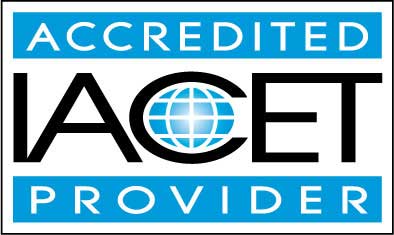
Course Lessons
Lesson 1: Introduction to Canning and Preserving
 Lesson 1 Video
Lesson 1 Video Lesson discussions: Canning and Preserving; Reasons for Taking this Course
Lesson discussions: Canning and Preserving; Reasons for Taking this Course Complete Assignment: An Introduction
Complete Assignment: An Introduction Complete: Lesson 1 Assignment
Complete: Lesson 1 Assignment Assessment: Lesson 1 Exam
Assessment: Lesson 1 Exam
Lesson 2: Getting Started in Canning and Preserving
 Lesson 2 Video
Lesson 2 Video Lesson discussions: Preserving Foods
Lesson discussions: Preserving Foods Complete: Lesson 2 Assignment
Complete: Lesson 2 Assignment Assessment: Lesson 2 Exam
Assessment: Lesson 2 Exam
Lesson 3: Freezing Your Foods
 Lesson 3 Video
Lesson 3 Video Complete: Lesson 3 Assignment
Complete: Lesson 3 Assignment Assessment: Lesson 3 Exam
Assessment: Lesson 3 Exam
Lesson 4: Canning Foods
 Lesson 4 Video
Lesson 4 Video Complete: Lesson 4 Assignment
Complete: Lesson 4 Assignment Assessment: Lesson 4 Exam
Assessment: Lesson 4 Exam
Lesson 5: Jams and Jellies
 Lesson 5 Video
Lesson 5 Video Complete: Lesson 5 Assignment
Complete: Lesson 5 Assignment Complete Assignment: Making Your Own Jelly or Jam
Complete Assignment: Making Your Own Jelly or Jam Assessment: Lesson 5 Exam
Assessment: Lesson 5 Exam
Lesson 6: Pickles, Chutney, Ketchup, and Relish
 Lesson 6 Video
Lesson 6 Video Complete: Lesson 6 Assignment
Complete: Lesson 6 Assignment Assessment: Lesson 6 Exam
Assessment: Lesson 6 Exam
Lesson 7: Fruits, Veggies and Berries
 Lesson 7 Video
Lesson 7 Video Complete: Lesson 7 Assignment
Complete: Lesson 7 Assignment Assessment: Lesson 7 Exam
Assessment: Lesson 7 Exam
Lesson 8: Preserving Beverages: Juice, Cider, and More
 Lesson 8 Video
Lesson 8 Video Complete: Lesson 8 Assignment
Complete: Lesson 8 Assignment Assessment: Lesson 8 Exam
Assessment: Lesson 8 Exam
Lesson 9: Canning and Preserving Other Foods
 Lesson 9 Video
Lesson 9 Video Lesson discussions: Canning
Lesson discussions: Canning Complete: Lesson 9 Assignment
Complete: Lesson 9 Assignment Assessment: Lesson 9 Exam
Assessment: Lesson 9 Exam
Lesson 10: Canning and Preserving for Special Diets
 Lesson 10 Video
Lesson 10 Video Complete: Lesson 10 Assignment
Complete: Lesson 10 Assignment Complete Assignment: Botulism
Complete Assignment: Botulism Assessment: Lesson 10 Exam
Assessment: Lesson 10 Exam
Lesson 11: The Secrets to Success and Getting Started
 Lesson 11 Video
Lesson 11 Video Lesson discussions: Let us know what you think of this course; Program Evaluation Follow-up Survey (End of Course); Course Comments
Lesson discussions: Let us know what you think of this course; Program Evaluation Follow-up Survey (End of Course); Course Comments Complete: Lesson 11 Assignment
Complete: Lesson 11 Assignment Assessment: Lesson 11 Exam
Assessment: Lesson 11 Exam Assessment: The Final Exam
Assessment: The Final Exam
Learning Outcomes
- Describe what canning and preserving and why it's beneficial to do it.
- Describe how to get started in canning and preserving.
- Describe freezing your foods.
- Describe canning foods.
- Summarize preserving jams and jellies, pickles, chutney, ketchup, and relish
- Summarize preserving fruits, veggies and berries.
- Summarize preserving beverages.
- Summarize canning and preserving for special diets.
- Demonstrate mastery of lesson content at levels of 70% or higher.
Additional Course Information
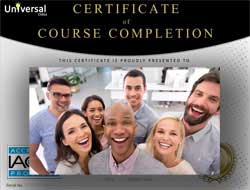
- Document Your Lifelong Learning Achievements
- Earn an Official Certificate Documenting Course Hours and CEUs
- Verify Your Certificate with a Unique Serial Number Online
- View and Share Your Certificate Online or Download/Print as PDF
- Display Your Certificate on Your Resume and Promote Your Achievements Using Social Media

Choose Your Subscription Plan
No Certificate / No CEUs
This course only
| Includes certificate | X |
| Includes CEUs | X |
| Self-paced |

|
| Instructor support |

|
| Time to complete | 6 months |
| No. of courses | 1 course |
Certificate & CEUs
This course only
| Includes certificate |

|
| Includes CEUs |

|
| Self-paced |

|
| Instructor support |

|
| Time to complete | 6 months |
| No. of courses | 1 course |
Certificates & CEUs
Includes all 600+ courses
| Includes certificate |

|
| Includes CEUs |

|
| Self-paced |

|
| Instructor support |

|
| Time to complete | 12 Months |
| No. of courses | 600+ |
Certificates & CEUs
Includes all 600+ courses
| Includes certificate |

|
| Includes CEUs |

|
| Self-paced |

|
| Instructor support |

|
| Time to complete | 24 Months |
| No. of courses | 600+ |
Student Testimonials
- "I found it very informative. There are so many things to master that I've learned. Very glad that I found you on the web!!!" -- Leslie S.
- "Overall the course was very informative. I have been preserving food for years but this course opened my eyes to new ways of preserving food. Foods that I had not ever thought of to can or preserve. So I am now very excited about experiencing new ways." -- Nancy G.
- "Lovely teacher." -- Stephanie B.
- "The entire class was helpful. Great teacher." -- Stephanie B.
- "What was most helpful was the detailed info and pictures which were very instructive." -- Jack D.
- "What was most helpful were the step by step instructions." -- Melody-Ann W.
- "I found the entire course very informative. I have been freezing for years and I was able to confirm that I have been doing it properly as well as ways to freeze food I have not tried yet." -- Linda H.
- "This class was full of valuable information--I loved it! It helped so much with what to do with the produce from my garden this year!" -- Nora B.
- "I appreciated all the feedback the instructor gave. All the material presented in the course was well defined and explained." -- Joanne L.
- "The instructor is fabulous!!!" -- Peggy O.
Related Courses
-
 54 hours
5.4 CEUs
Become a Life Coach - Course Bundle
+ More Info
54 hours
5.4 CEUs
Become a Life Coach - Course Bundle
+ More Info
-
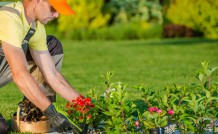 9 hours
0.9 CEUs
Landscaping 101
+ More Info
9 hours
0.9 CEUs
Landscaping 101
+ More Info
-
 9 hours
0.9 CEUs
Watercolor Painting 101
+ More Info
9 hours
0.9 CEUs
Watercolor Painting 101
+ More Info
-
 6 hours
0.6 CEUs
Etiquette Consultant
+ More Info
6 hours
0.6 CEUs
Etiquette Consultant
+ More Info
-
 14 hours
1.4 CEUs
Feng Shui 101
+ More Info
14 hours
1.4 CEUs
Feng Shui 101
+ More Info
-
 17 hours
1.7 CEUs
Mixed Media Art
+ More Info
17 hours
1.7 CEUs
Mixed Media Art
+ More Info
-
 10 hours
1.0 CEUs
Sewing 101
+ More Info
10 hours
1.0 CEUs
Sewing 101
+ More Info
-
 7 hours
0.7 CEUs
Microsoft Excel Level 2
+ More Info
7 hours
0.7 CEUs
Microsoft Excel Level 2
+ More Info
-
 14 hours
1.4 CEUs
Weight Training 101
+ More Info
14 hours
1.4 CEUs
Weight Training 101
+ More Info
-
 9 hours
0.9 CEUs
Weight Loss Management
+ More Info
9 hours
0.9 CEUs
Weight Loss Management
+ More Info
-
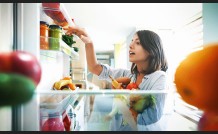 7 hours
0.7 CEUs
Nutrition 101
+ More Info
7 hours
0.7 CEUs
Nutrition 101
+ More Info
-
 11 hours
1.1 CEUs
Wellness Coaching
+ More Info
11 hours
1.1 CEUs
Wellness Coaching
+ More Info
-
 7 hours
0.7 CEUs
Lifetime Wellness 101
+ More Info
7 hours
0.7 CEUs
Lifetime Wellness 101
+ More Info
-
 14 hours
1.4 CEUs
Cake Decorating 101
+ More Info
14 hours
1.4 CEUs
Cake Decorating 101
+ More Info
-
 13 hours
1.3 CEUs
Image Consultant
+ More Info
13 hours
1.3 CEUs
Image Consultant
+ More Info
-
 4 hours
0.4 CEUs
How to Bake Cookies
+ More Info
4 hours
0.4 CEUs
How to Bake Cookies
+ More Info
-
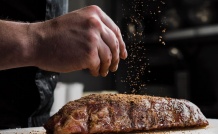 11 hours
1.1 CEUs
Cooking and Baking 101
+ More Info
11 hours
1.1 CEUs
Cooking and Baking 101
+ More Info
-
 4 hours
0.4 CEUs
Knitting 101
+ More Info
4 hours
0.4 CEUs
Knitting 101
+ More Info
-
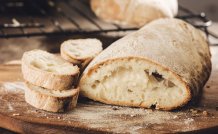 5 hours
0.5 CEUs
Bread Baking 101
+ More Info
5 hours
0.5 CEUs
Bread Baking 101
+ More Info
-
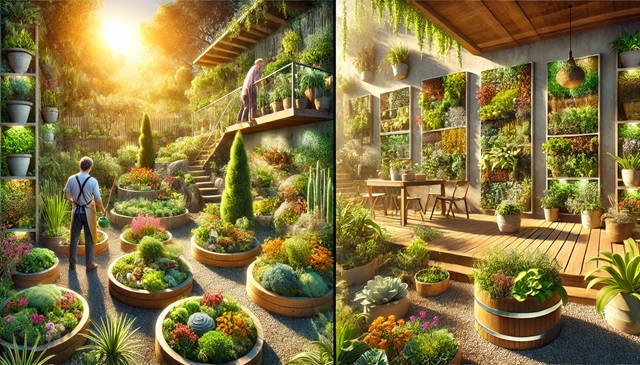 6 hours
0.6 CEUs
Introduction to Gardening
+ More Info
6 hours
0.6 CEUs
Introduction to Gardening
+ More Info
-
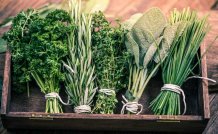 5 hours
0.5 CEUs
All About Herbs
+ More Info
5 hours
0.5 CEUs
All About Herbs
+ More Info
-
 15 hours
1.5 CEUs
Western Calligraphy
+ More Info
15 hours
1.5 CEUs
Western Calligraphy
+ More Info


